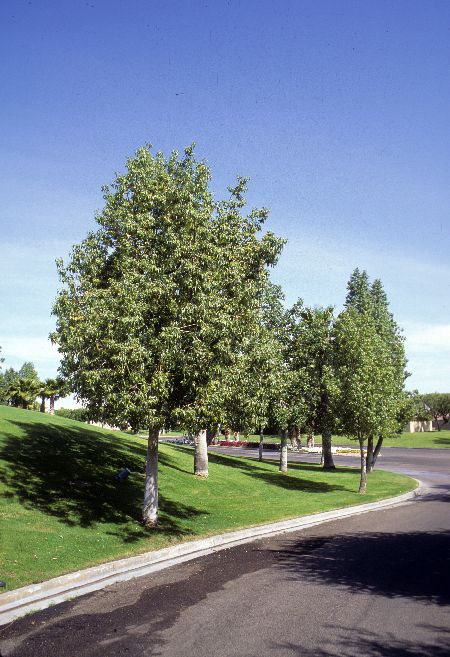
Brachychiton populneus
Bottle Tree
The common name Bottle Tree is due to shape of the trunks of mature trees—wide at bottom and tapering toward the top. Flowers are small and not all that noticeable. Canopy coverage: 314 square feet.
[Read More]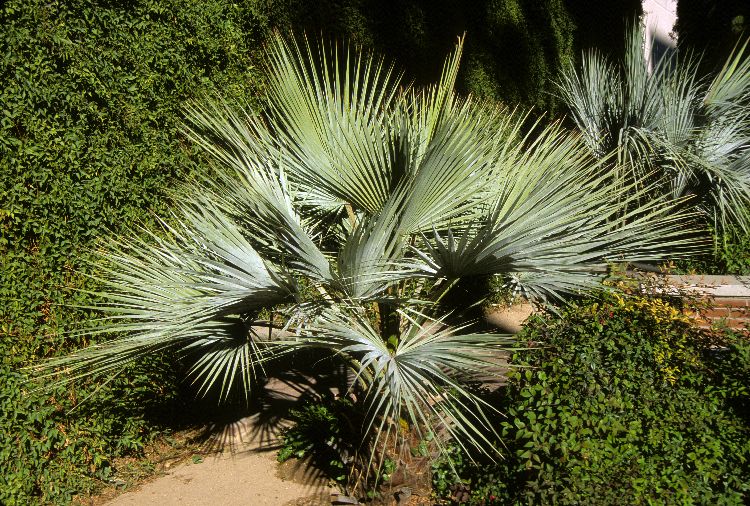
Brahea armata
Mexican Blue Palm
Mexican Blue Palm is a tropical, fan-type palm that is very slow growing. Canopy coverage: 79 square feet.
[Read More]Butia capitata
Pindo Palm
Pindo Palm is a feather-type palm, with fronds growing up to 10 feet in length that curve back toward its sturdy trunk. It is cold hardy and widely adapted to a range of climates, from coastal to desert. Best with some protection from the sun in hot summer regions. Canopy coverage: 177 square feet.
[Read More]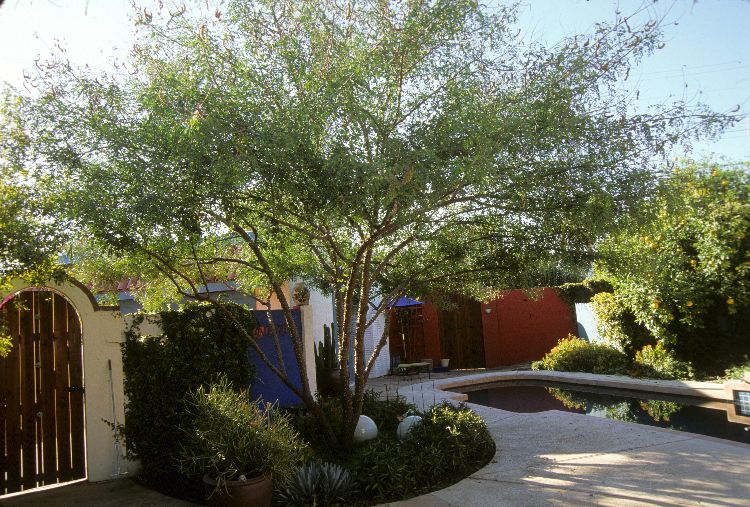
Caesalpinia cacalaco
Cascalote
Cascalote can be trained to become a small, vase-shaped tree. Spike-shaped flowers are profuse winter into spring. Interesting and colorful seed pods follow flowers. Canopy coverage: 177 square feet.
[Read More]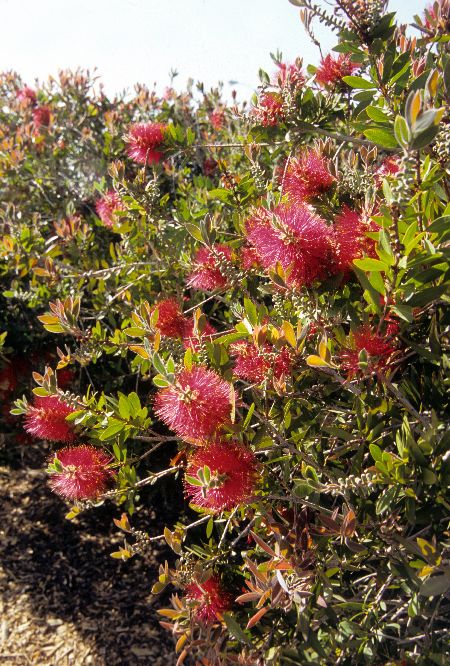
Callistemon citrinus
Lemon Bottlebrush
Lemon Bottlebrush is very accepting of pruning and shaping to become a shrub, screen or patio tree. New growth in spring has interesting coppery color. Rich red bottlebrush-shaped flowers are naturally striking. Canopy coverage: 177 square feet.
[Read More]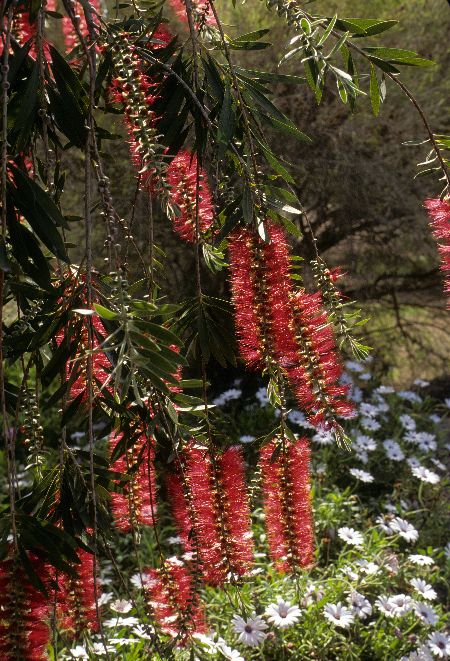
Callistemon viminalis
Weeping Bottlebrush
The branches of this small tree drape down in a pendulous fashion, showcasing the rich, red, bottle brush flowers. This Australian native does not like overly moist soil so avoid planting in lawns. Canopy coverage: 177 square feet.
[Read More]Calocedrus decurrens
Incense Cedar
This needled evergreen tree is known for its flattened, fernlike leaves. Trees can get tall in the wild—more than 100 feet high. Foliage emits a pleasant scent when crushed, thus the common name Incense Cedar. Trees wear rugged, reddish brown bark as they mature. Best with some protection from the sun in hot summer regions. Canopy coverage: 1,963 square feet.
[Read More]Catalpa speciosa
Western Catalpa
Western Catalpa produces an irregular crown, and is somewhat pyramidal in form. Leaves are large, coarse textured, shaped like hearts, and susceptible to damage in strong winds. Flowers are followed by long seedpods up to 18 inches long. Accepts sandy to loam soils, tolerates clay soils. Canopy coverage: 1,257 square feet.
[Read More]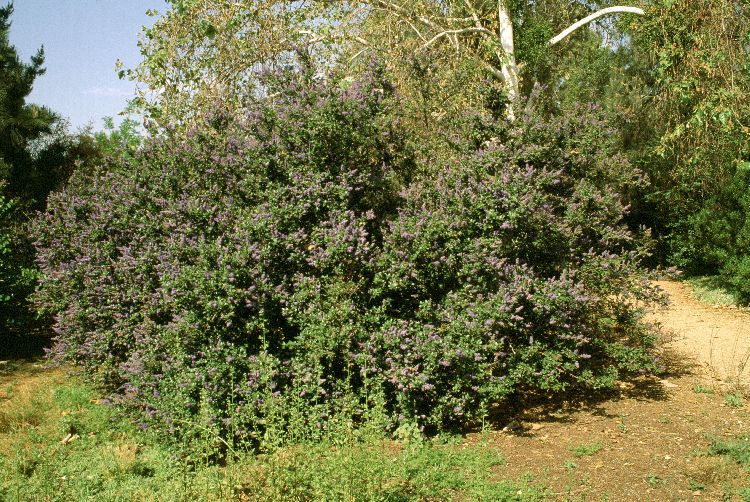
Ceanothus 'Frosty Blue'
Frosty Blue California Lilac
One of the most accommodating Ceanothus, accepting a wide range of soils, exposure to the sun and irrigation. Can be trained to become a small tree. Avoid watering in summer, however, except to establish new plants the first year. Canopy coverage: 50 square feet.
[Read More]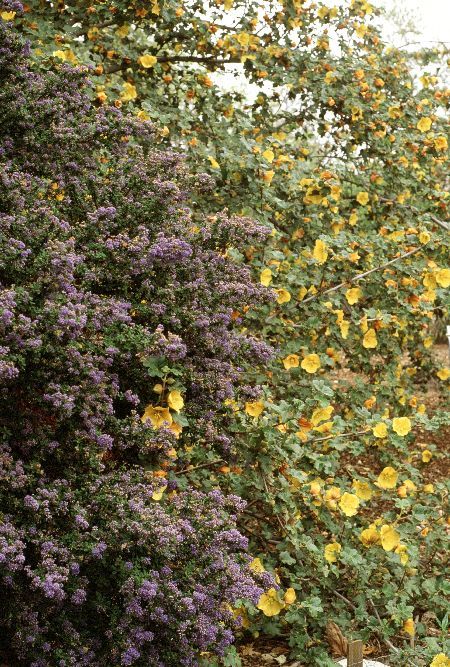
Ceanothus 'Ray Hartman'
Ray Hartman Wild Lilac
The most popular of the large Ceanothus, due to its handsome appearance and acceptance of a range of soil types, drought, as well as both coastal and inland climates. Fast-growing, it can be trained to become a small tree in a matter of years. Avoid watering in summer, however, except to establish new plants the first year. Canopy coverage: 314 square feet.
[Read More]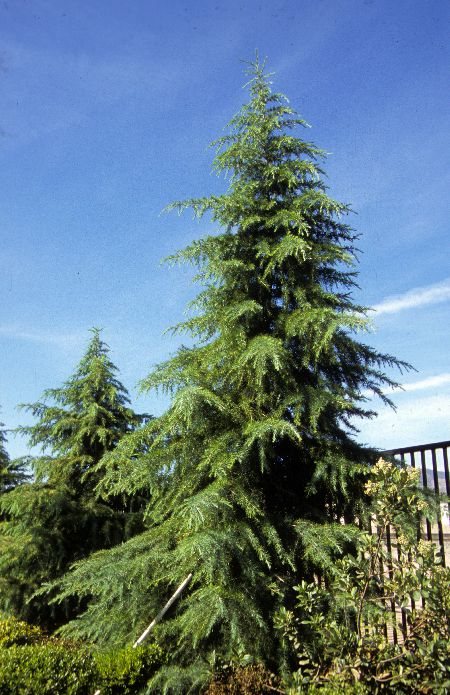
Cedrus deodara
Deodar Cedar
Be certain to allow plenty of space for Deodar Cedar. It is a long-lived tree that can reach huge proportions. It has a distinctive, cascading form due to its moderately weeping growth habit. Accepting of hot, dry conditions. Canopy coverage: 1,257.
[Read More]Cedrus libani stenocoma
Cedar of Lebanon
This subspecies of Cedar of Lebanon is quite similar to the species, particularly in youth. (Shown in photos.) It is more cold hardy—to USDA Zone 5. Young trees of both are narrow and pyramidal in form. Eventually the species takes on a desirable shape with broad, spreading, horizontal branches. Canopy coverage: 1,257 square feet.
[Read More]Celtis occidentalis
Western Hackberry
Adapted to grow in a wide range of climates, Western Hackberry is also known as Common Hackberry. Grows as a large shrub or tree—give it more water for tree form. Best to plant from containers rather than bare root for better establishment. Yellow fall color and small red to purple fruit are attractions. Canopy coverage: 1,963 square feet.
[Read More]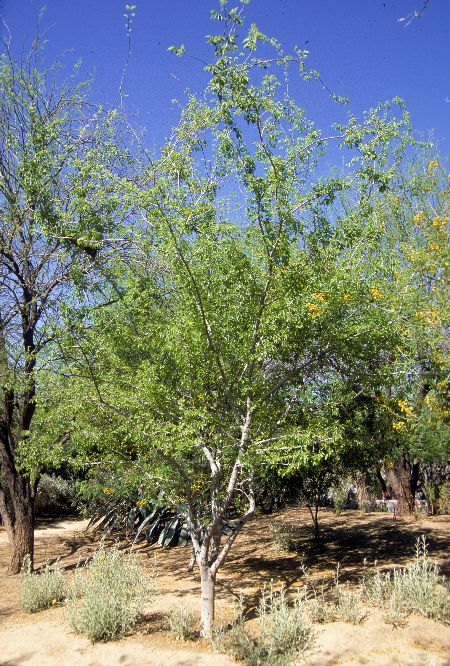
Celtis reticulata
Canyon Hackberry
The knobby gray bark of Canyon Hackberry is an interesting feature. Birds are attracted to the orange summer berries. Produces allergenic pollen. Canopy coverage: 491 square feet.
[Read More]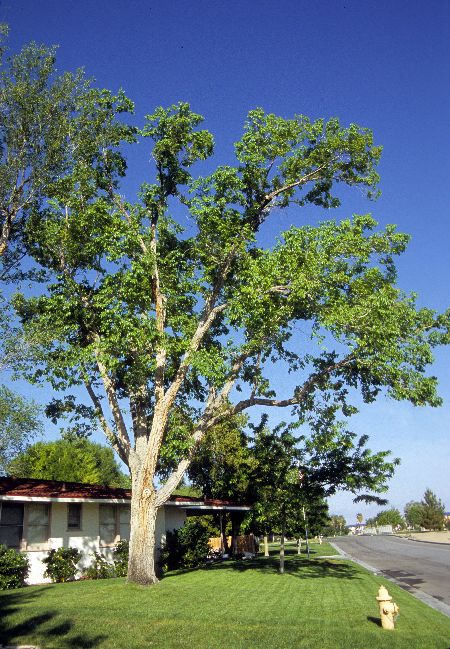
Celtis sinensis
Chinese Hackberry
Water Chinese Hackberry deeply to encourage deep roots so trees will withstand strong winds. Canopy coverage: 1,257 square feet.
[Read More]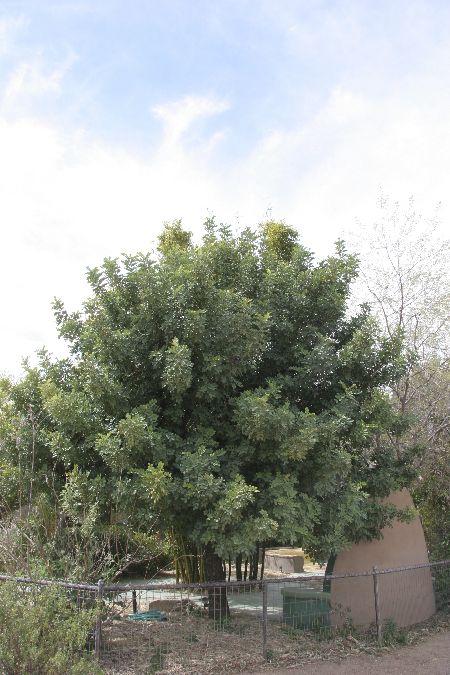
Ceratonia siliqua
Carob Tree
This evergreen tree has a round-headed form, its lush canopy producing dense shade. Flowers emerge as pinkish yellow, gradually turning red. Roots can be invasive. Female plants produce long brown seed pods that can be messy. Canopy coverage: 1,257 square feet.
[Read More]Cercis canadensis
Eastern Redbud
Eastern Redbud is an attractive small tree for home landscapes. Flowers appear early in spring on bare branches, even before the leaves emerge. Yellow fall color. Selections with different flower colors are also available. Accepts sandy to loam soils; prefers moist soil but not soggy. Requires protection from winter temperatures in coldest regions. Canopy coverage: 707 square feet.
[Read More]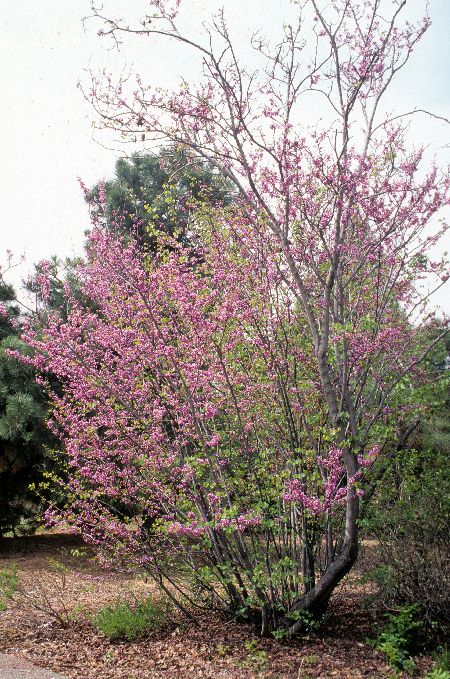
Cercis occidentalis
Western Redbud
Grow Western Redbud as a tree or shrub. Established plants are cold hardy, but young plants may need cold protection when temperatures drop below 20 degrees during their first few years. Flowering is improved when winter cold drops below 28 degrees. Canopy coverage: 177 square feet.
[Read More]Cercocarpus betuloides
Western Mountain Mahogany
This is a chaparral shrub or small tree, adapted to a range of conditions and water applications. Accepts summer water. Useful as a screen, hedge or foundation plant. Flowers are small and not too showy. The seeds, which are adorned with feathery tails, add interest. Canopy coverage: 79 square feet.
[Read More]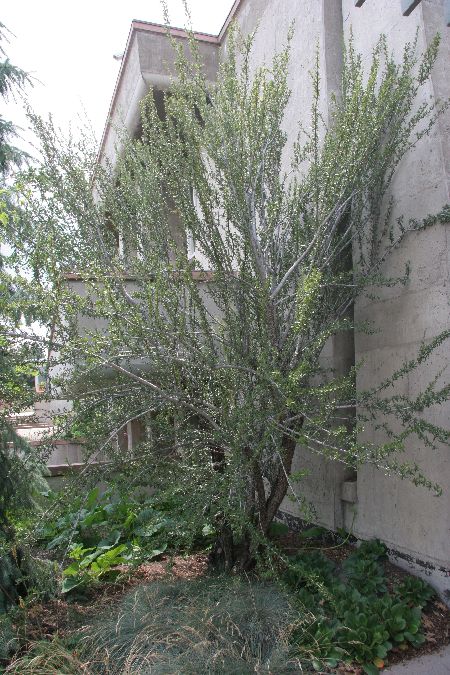
Cercocarpus ledifolius
Curl-leaf Mountain Mahogany
Curl-leaf Mountain Mahogany makes a suitable background plant. It can be trained to become a small tree to show off its rich, reddish brown bark. The small white flowers remind one of roses. Plant in well drained soil. Best with some protection from the sun in hot summer regions. Canopy coverage: 79 square feet.
[Read More]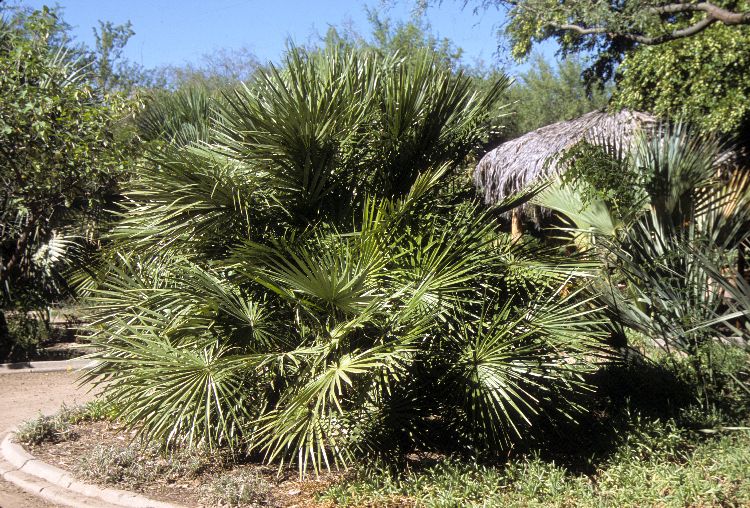
Chamaerops humilis
Mediterranean Fan Palm
This is a small, fan-type palm with a mature size (to 10 feet) to remain in scale for residential use. Best with some protection from the sun in hot summer regions. Canopy coverage: 50 square feet.
[Read More]